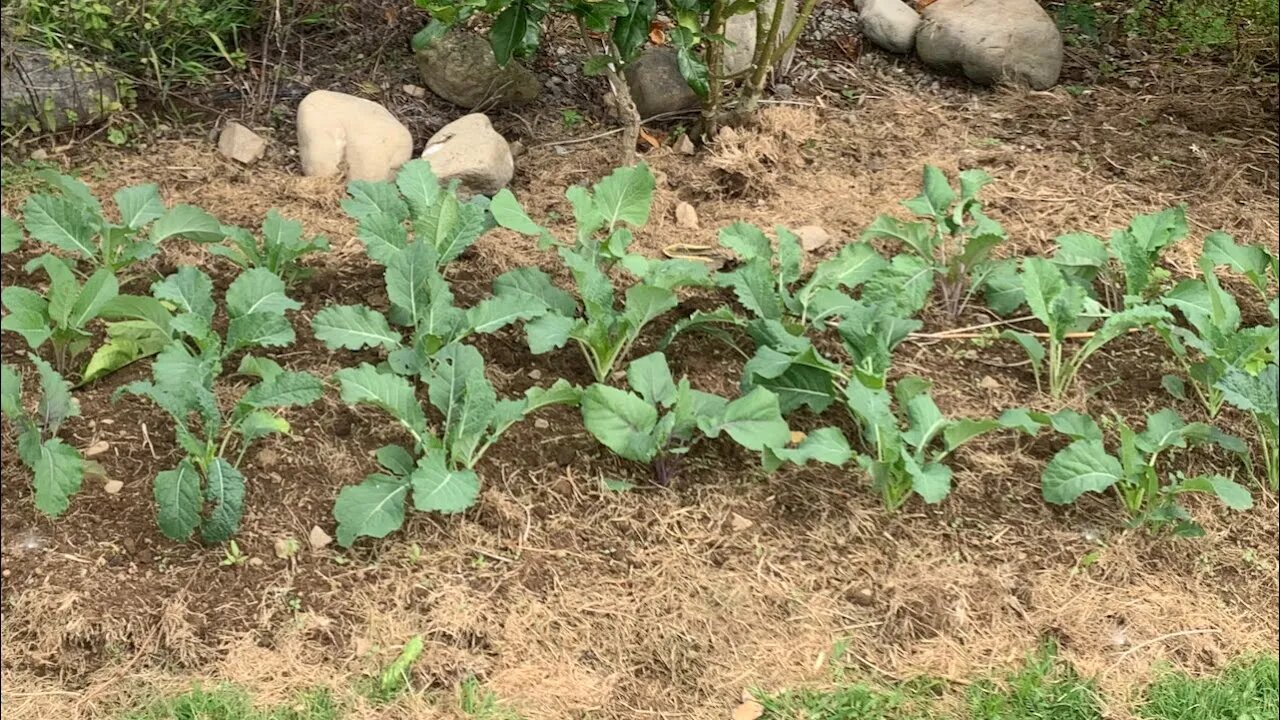Premium Only Content

How to grow plants and seeds form store bought fruit and vegetables.
Food Supply How to grow plants form store bought fruit and vegetables.
After all the panic buying, which for many people was the right thing to do, except the toilet paper meme, that got out of control.
The next thing for the West and other places is that food supply is getting a bit tight.
It is time to do anything you can about securing your food supply and your neighbours food supply.
Your garden is pretty worthless if your neighbours are starving, so set them up too.
Aquire seeds and start planting. What you need are the starchy vegetables, roots, potatoes, sweet potatoes, beans, peas and pumpkins plus cabbages. Tomatoes, cucumbers, lettuce, herbs and salad stuff are nice if you have food calories to go with them, but they are only a supplement to the starchy vegetables, if there are food shortages.
Good thing is that you can grow many of theses from the vegetables themselves.
Dry out pumpkin seeds, also called squash. The hard grey pumpkins (crown pumpkins) keep for many months, when cool and dry. Butternut squash can also have good storage properties. Soft green skinned buttercup can damage easily, may not store as well.
If you are in the Northern hemisphere, buy pumpkins now and get the seeds out. Dry them for a few days and then plant them in your garden in spring (now), harvest in Autumn, plant a third of your yard space in pumpkins. Just mow your lawn, dig some holes in the lawn where the pumpkins are planted. Put in a little fertiliser or manure if you have any. Easy. The plants will sprawl out over any sunny lawn and if you just leave them alone they will spread out and grow a few pumpkins per plant.
And plant a third of your space in potatoes and sweet potatoes. You can propagate potatoes by planting potatoes directly into the ground. Buy a few different kinds of potatoes, you have no time to work out which grow best in your yard. Dig up all your useless lawn and plant potatoes now. If you buy big potatoes, cut them in thirds or in half, each bit about golf ball size is good. Let them dry, cut side exposed to the air for three or four days. Then plan, the plants come up mound the soil up around the stalks leaving the top leaves in the air the potatoes will grow along the stems.
If you have no yard space, you can grow potatoes in plastic bins, buckets or wooden boxes, or directly in cheap bags of potting mix or compost, just puncture the bottoms of the bags or bins for drainage, and cut potato sized holes in the top of compost bags, about four to six holes and plant four to six bits of potato per bag.
Just keep the soil damp, after a few months you will have a bunch of potatoes.
Cabbages. You can grow seeds from a store bought cabbage. Just eat the cabbage by pealing off he leaves layer by layer, you can cut most of the leaves off also.
What you want to do is remove most of the outer leaves leaving the stalk and about a tennis ball of the central leaves intact.
Then put the stalk in a jar of water, change the water every few three days, and roots will begin to grow. Fill the water up to just below the leaves. The leaves will darken and start to unfurl. Place it where their is natural light but not full sunshine, It gets too hot.
When fine roots begin to grow, transfer to soil. Keep the soil damp, but not soaking.
You can hand pollinate flowers with a soft brush.
Corn: some sweetcorn if grown to maturity, will have some viable kernels. Particularly the ones near the stalk end. But late summer sweetcorn that is very mature will likely provide some viable seeds. Break the stalk end third off of corn cobs, eat the ed two thirds keep the think end char cob for seeds. This is good in the southern hemisphere in April or May. Just buy some sweetcorn and hang up the whole leaf wrapped corn cobs to dry, you might get some viable seeds this way.
Spinach, silverbeet, fancy lettuce, pak-choy. If the plants are harvested whole, and have some part of the root, you can cut most of the top of the plat off 3cm or 1 inch above the root. Just leaving leaf stubs. Then place the root in water, if the nodes where new roots can sprout from are viable, then roots will grow, change water every few days. When there are some reasonable roots, transfer to damp soil, water daily for a week, then every other day for a couple more weeks, the leaf sprouts will grow and eventually the plant will seed.
Nothing irradiated will grow. Radiation in this way destroys viable germ cells in seeds.
Beans and peas, dried. Haricot.
Watermelon and rock melon, cantaloup seeds can grow plants too. The from memory round dark green watermelons breed true offspring.
Zucchini and courgettes are immature, no viable seeds. Fully grown marrows have viable seeds.
Bell peppers, capsicum and chillies all have viable seeds. Just dry out the core with the seeds attached then grow from the spring.
Tomatoes have fully grown seeds. Just take the seeds out of ripe fruit and dry them on paper towels and grow them in spring.
-
 14:45
14:45
BlabberingCollector
18 hours agoKings Cross Station SET LEAKS! | Harry Potter HBO Show Update & News
4.67K -
 33:20
33:20
SB Mowing
9 days agoHealth Struggles + Endless Rain = A Yard Out of Control
13.2K18 -
 1:09:42
1:09:42
Mike Rowe
4 days agoHow Did THIS Dirty Job Make Tommy Mello A Billionaire?! | #447 | The Way I Heard It
71.3K20 -

SpartakusLIVE
11 hours agoThe BADDEST Duo in WZ Exhibits PEAK Physique || Duos w/ Sophiesnazz to start, quads later
170K1 -
 2:49:37
2:49:37
RattlesnakeTV
22 hours ago $0.28 earnedLIVE DEBATE! Lord Jake vs Crazy Feminist
31.4K16 -
 4:00:42
4:00:42
Badlands Media
14 hours agoThe Narrative Ep. 35: Codex of Truth
97K45 -
 3:55:56
3:55:56
Due Dissidence
16 hours agoSchmuley TRASHES Shapiro, Maxwell Sings For Pardon, Uhuru Doc Preview - Live From St. Louis!
50.8K46 -
 LIVE
LIVE
Lofi Girl
2 years agolofi hip hop radio 📚 - beats to relax/study to
351 watching -
 2:23:21
2:23:21
PandaSub2000
5 days agoMadison VR (Part 4) | PSVR 2000 (Original Live Version)
28.9K2 -
 2:34:32
2:34:32
Badlands Media
5 days agoCODEX 9/11
313K273